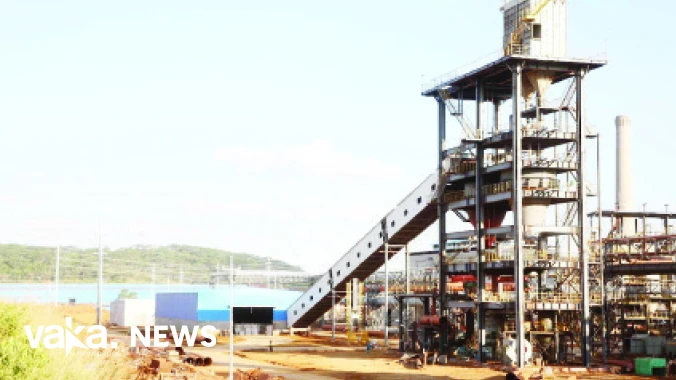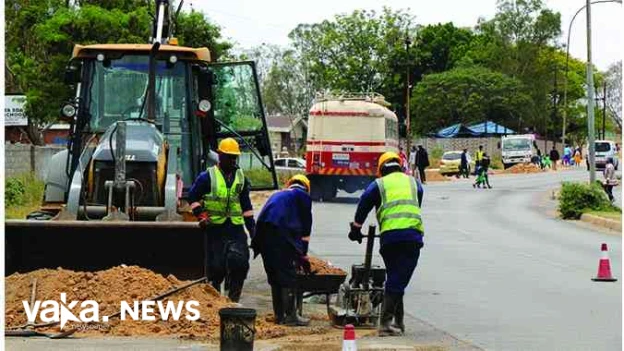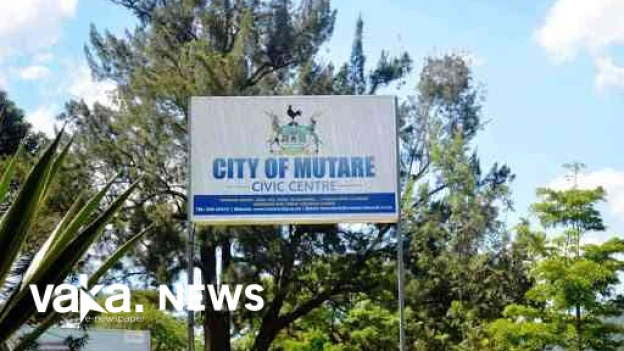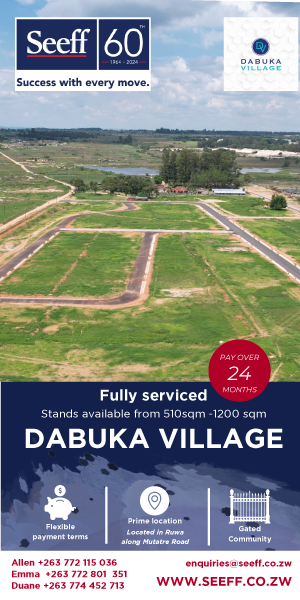US$1,5bn steel plant ready by June
- Category: Construction

- By Dion Kajokoto
THE US$1,5 billion steel plant completed recently in Manhize near Mvuma is expected to commence operations by June this year and has started mobilising raw materials to the plant with over 50 000 tonnes of stockpiles of coking coal now on site.
The facility was created by Dinson Iron and Steel Company (Disco), one of the three local subsidiaries of Tsingshan Holdings Group Limited, a Chinese producer of stainless steel. Once it begins operations, it is expected to revolutionize the local engineering, iron, and steel industries. The initiative is also anticipated to significantly lower raw material costs in industries like construction, which significantly rely on steel for the building of infrastructure.
The Engineering Iron and Steel Association of Zimbabwe (EISAZ) reports that Zimbabwe has been importing steel and related products worth US$1 billion a year from South Africa, India, and China ever since Zisco closed its doors in 2008, during the height of the country's hyperinflation. When Zisco reached its height in the late 1990s, it employed over 5,000 people directly and produced over a million tonnes of steel annually.
Zimbabwe is reported to use 1.5 million tons of steel annually by EISAZ. With Zimbabwe aiming to become an upper middle-income country by 2030, the Manhize steel project—hailed as Africa's largest integrated steel plant—adds momentum to the government's ambitions of leaving no one and no place behind in economic growth and development. Iron ore, one of the primary raw materials used in the production of steel, is already being mined and crushed at the company's mine, which is located seven kilometers west of the plant, according to an interview conducted by this publication on Tuesday during a tour of the steelworks project with Disco public relations manager Mr. Joseph Shoko.
At Disco's Masvingo mine, limestone, another important raw material for the production of steel, is now being extracted. We are mining ore seven kilometers to the west of the plant; we have begun mining there and have also begun crushing; all that is left is to transport the ore from the mine to this location. We have accumulated over 50,000 tonnes of coking coal from Hwange and we will keep transporting the coal from Hwange. "We are also now extracting limestone from Masvingo, and we want to begin mining limestone shortly. Everything will be ready for commissioning by then," he stated.
In the first phase, the steel plant is anticipated to produce 600 000 tonnes of products, and in the second phase, 1, 2 million tonnes. By the end of this year, the 1,500-person-strong Dinson Steel Project hopes to have completed the first phase of production of pig iron, steel billets, and steel bars. When the factory commences operations, around 2,500 individuals will hold direct employment positions.
With 10,000 people employed directly at the steel factory, production is expected to increase to 3.2 million tonnes annually in the third phase and five million tonnes annually in the final phase, providing a wide range of steel products to the Zimbabwean sector. Phase one net revenues are anticipated to be US$10 million, with phase four production revenues predicted to reach US$4,25 billion.
"We will start with the billets when production starts, but by October, we should be ready to create steel bars. Before we start exporting, we want to meet local demand because, as you know, we get 80% of our steel from foreign sources. Consequently, since no other industry is manufacturing the steel we wish to produce here, our primary goal is to meet the already-guaranteed local demand.
"We've already fielded a lot of questions from the SADC region. The Democratic Republic of the Congo (DRC), Zambia, Malawi, and other nations want to know exactly when we plan to begin production. He declared, "We will definitely focus on our Sadc countries after we have satisfied the local market because we want to make sure that the region has enough supply of steel." According to Mr. Shoko, all of the Sadc region's nations have been importing steel from South Africa, with the exception of Dinson and ArcelorMittal in South Africa.
"If you look at the quantities that we need here in Zimbabwe, you can see that we obviously need between 400 000 and 500 000 tonnes of steel per year, and that size is almost as good as the demand that other countries in the region might need."
"With just two blast furnaces, we (can) produce more than 1,2 million tonnes annually and we are confident that we will be able to supply the steel that is wanted by all the countries that require them in Africa," he stated. "We intend to end up having more than six blast furnaces." Since Zisco, the biggest integrated steelworks north of Limpopo, closed its doors in 2008 during the height of the hyperinflationary period, the nation has mostly been spending millions of dollars importing steel. According to Mr. Shoko, a lot of information has been discussed thus far on the completion of the Manhize steel mill.
"Let's start with our main workshop, which is a sizable 3,5 hectare facility where we perform a lot of fabrication. One of the buildings is built, in use, and fully functional. "The majority of the steel we've been utilizing here needs to be fabricated. That workshop completed the fabrication, and it functions. "The sintering facility, which is the primary initial step in the entire process where the majority of these raw materials begin to be crushed and mixed up, is now complete,” he declared.
"The actual blast furnace is 99 percent finished. "We also have a power plant that is finished and the rolling steel ground that is currently under construction, both of which are nearly 95% complete." The Second Republic's establishment of a favorable investment climate led to the start of operations under the steel plant's first phase. With all raw materials mined locally and iron ore located near Manhize, the project's scheduled opening puts Zimbabwe in a strong position to become a major global player in steel manufacturing. Thousands of new jobs will also be created at the expanding steelworks and in downstream heavy industry as local industrialists use local steel.
According to Mr. Shoko, work on building an 88KV transmission power line from Sherwood in Kwekwe to Manhize is currently 80% complete. Dinson anticipates the line will be finished by the end of the next month. "We are hoping to finish the line by the end of April and have the 88Kv from Kwekwe to here. We have already completed over 80% of the line." With that in place, we can now commission the plant, and we anticipate doing so at any point in May or June," he stated.






